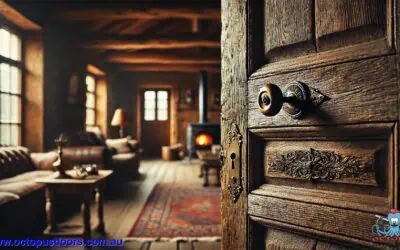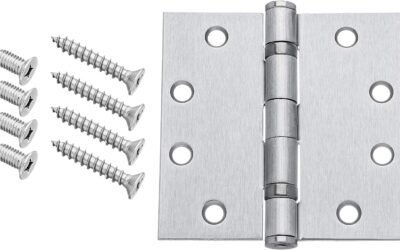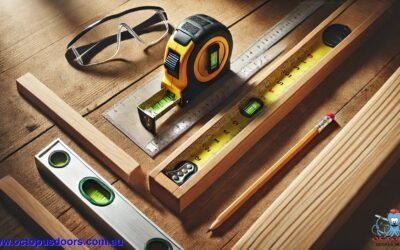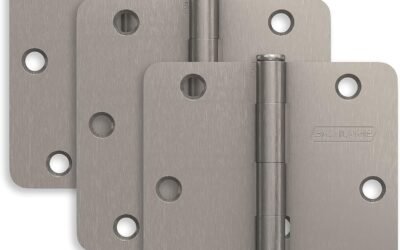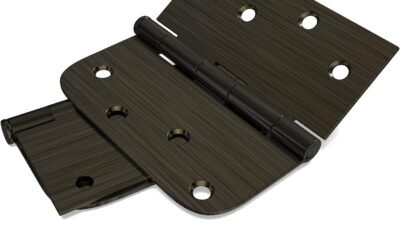
You’re an ambitious woodworker, passionate about creating stunning pieces that showcase the beauty and versatility of wood. Contrary to popular belief, you’ve heard whispers about a mystical type of wood that sinks in water. Curiosity piqued, and you set off on a quest to learn more about this elusive material.
Welcome, inquisitive woodworker, to your ultimate resource on the considerations when using wood that sinks in water.
Introduction To Sinking Wood
Wood may float or sink in water, but what exactly separates these two categories? As you may have guessed, it all comes down to the density of the wood relative to the density of water. Highly dense wood species possess unique characteristics not found in their lighter counterparts.
In short, sinking wood is denser than water, making it a unique and sought-after material for certain applications. However, there are several factors one must consider when working with sinking wood.
“The density and hardness of sinking wood make it an appealing choice for furniture makers and woodworkers alike, but working with this unique material can present challenges,” says Ross Adams, a respected woodworker and master craftsman.
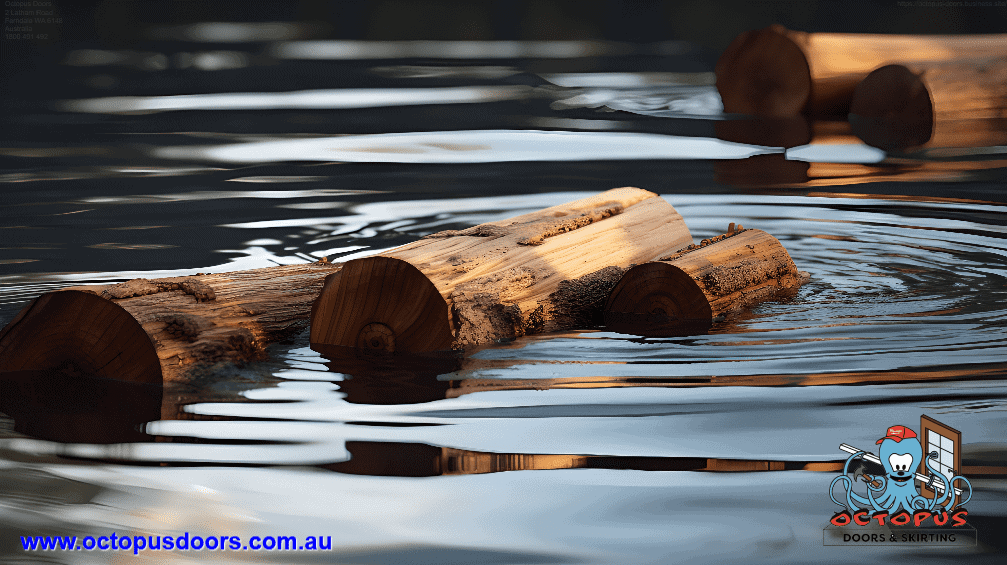
The Science Behind Sinking Wood: Density
Water has a density of 1 g/cm³. For wood to sink, its density must be greater than that.
Although most wood species have a density lower than water, there are few that surpass this threshold, opening up a world of possibilities for those willing to explore these rarities. But why are these woods denser than water? A combination of factors, including the wood’s structure and the concentration of lignin and cellulose within it, are responsible for this property.
Types Of Sinking Wood
Lignum Vitae (Guaiacum officinale)
Lignum Vitae, also known as the “Tree of Life,” is a truly exceptional wood species. Native to the Caribbean and the northern coast of South America, Lignum Vitae boasts an unrivalled combination of strength, durability, and density, making it the perfect choice for applications where these qualities are essential.
Key Characteristics:
- Density: Topping the charts with a density ranging between 1.2 to 1.4 g/cm³, Lignum Vitae is the densest wood in the world.
- Working Properties: Its oily composition yields a natural lubrication that allows for smooth cutting and minimal tool wear, despite its extreme hardness—up to 4,500 lbs on the Janka scale.
- Colour: Lignum Vitae exhibits a beautiful range of colours, from a pale yellow heartwood to a deep, rich green.
- Applications: Its outstanding properties make it ideal for heavy-duty engineering applications such as bearings, propeller shafts, and mallet heads. Additionally, its vibrant colours make it a popular choice for ornamental turning and heirloom woodworking projects.
Black Ironwood (Olea laurifolia)
Black Ironwood, found in the southern regions of Africa, comes in as a close second for the title of the world’s densest wood. Known for its attractive dark colour and exceptional resistance to wear, Black Ironwood has carved out a niche among artisans and industrialists.
Key Characteristics:
- Density: With a density of approximately 1.2 g/cm³, Black Ironwood is one heavyweight contender.
- Working Properties: This species is notoriously difficult to work with, as its extreme density (Janka hardness of 3,670 lbs) poses challenges for cutting and shaping. Carbide-tipped tools are highly recommended.
- Colour: As the name suggests, Black Ironwood displays a range of dark brown to black hues, often accented with streaks of lighter brown.
- Applications: Due to its remarkable resistance to wear, Black Ironwood is perfect for applications such as railroad ties, construction materials, and precision-engineered parts. Its highly attractive appearance also makes it an apt choice for custom furniture, sculpture, and turning projects.
Brazilian Ebony (Diospyros sp.)
Brazilian Ebony is characterized by its extreme hardness and rich dark colour. Found in the tropical regions of Central and South America, this highly sought-after material lends itself perfectly to furniture making and other woodworking projects, where both form and function are paramount.
Key Characteristics:
- Density: Brazilian Ebony’s density averages around 1.1 g/cm³, making it an impressive heavyweight in the world of woodworking.
- Working Properties: Due to its extreme hardness—up to 3,840 lbs on the Janka scale—Brazilian Ebony can be quite challenging to work with. However, sharp tools and slower cutting speeds can help tame this exotic beast.
- Colour: Exhibiting a deep, dark brown colour with streaks of black, Brazilian Ebony is strikingly beautiful and adds sophistication to any woodworking project.
- Applications: Its toughness, stability, and attractive appearance contribute to its popularity in the areas of high-end furniture making, cabinetry, and flooring. Moreover, its tonal qualities also make it an ideal choice for crafting musical instruments.
It’s vital to note that sourcing these rare woods responsibly is essential. Ensuring the use of ethically harvested and sustainably sourced materials will maintain the health of these ecosystems and prevent overexploitation.
| Wood Species | Density (g/cm³) | Janka Hardness (lbf) | Origin | Notable Applications | Key Features |
|---|---|---|---|---|---|
Lignum Vitae (Guaiacum officinale) | 1.2 – 1.4 | 4,500 | Caribbean and Northern South America | Bearings, propeller shafts, mallet heads, ornamental turning | Densest wood in the world, natural lubrication, vibrant colours |
Black Ironwood (Olea laurifolia) | 1.2 | 3,670 | Southern Africa | Railroad ties, construction materials, precision-engineered parts, custom furniture | Exceptional resistance to wear, dark colour, difficult to work |
Brazilian Ebony (Diospyros sp.) | 1.1 | 3,840 | Central and South America | High-end furniture, cabinetry, flooring, musical instruments | Extreme hardness, rich dark colour, stability, and tonal qualities for instruments |
| Woodworking Challenges | Sustainability Concerns | Historical Uses | Common Names | |
|---|---|---|---|---|
Lignum Vitae (Guaiacum officinale) | Oily composition requires special attention when gluing; it should be pre-drilled before screwing | Overexploitation has led to CITES regulations: trade of this species is now regulated. | Traditional shipbuilding; used to create balls, pulleys, and other parts for ships | Tree of Life, Gaiac tree |
Black Ironwood (Olea laurifolia) | Sharpening tools frequently is crucial due to the wood’s dense nature | African Black Ironwood is not currently listed in the CITES Appendices but should be used sustainably | Various traditional African tools and weapons; fence posts | Ironwood, Dead Man’s Hand |
Brazilian Ebony (Diospyros sp.) | Difficult to work with due to its interlocked grain pattern and high-density blunting cutting tools | Brazilian Ebony has been overharvested, leading several species in the genus Diospyros to be listed on the IUCN Red List. | Ancient ebony was often used to make ornamental turning pieces in Europe, as far back as Roman times. | Ebony black or blackwood |

Sourcing And Sustainability
Given the rarity and high demand, the sustainability of sinking wood species has become a critical consideration. Organizations like FSC and PEFC work to promote responsible forestry, ensuring the long-term availability of these woods without harming the environment.
Before purchasing sinking wood, verify that your supplier is adhering to sustainable practices and holds certifications from such organizations.
Working With Sinking Wood
Though highly desirable, sinking wood can pose challenges during woodworking. The density and hardness can quickly dull standard tools and make shaping and cutting a laborious task.
Hand tools like chisels, goulettes, and hand planes, made from high-quality metal alloys or carbide-tipped, can help overcome these challenges. Other tips for working with sinking wood include using slower cutting speeds, more frequent sharpening of tools, and allowing for ample drying time to avoid warping or cracking.
“Working with sinking wood requires patience and good technique. Start with sharp tools and work slowly. Enjoy the journey—it’s a rewarding experience,” advises renowned woodworker Samantha Baker.
Applications And Potential Use Cases
Sinking wood is well-suited for a variety of applications, including:
- Intricately carved furniture
- Heavy-duty industrial components
- Musical instruments
- Luxury flooring
These woods’ longevity, resistance to wear and decay, and overall beauty lend themselves to projects that require lasting performance and aesthetic appeal.
Expert Tips And Tricks
- Make responsible choices by exploring alternative local species with similar characteristics to minimize the environmental impact of your projects (sources like the Wood Database are invaluable for this).
- Connect with other woodworkers to share knowledge and experiences when dealing with sinking wood. You never know what clever tips you might learn from fellow enthusiasts.
- Regularly monitor your tools and equipment to extend their life and ensure accurate, clean cuts, especially when working with sinking wood.
Discovering the world of sinking wood can offer endless opportunities and inspire innovation in your woodworking ventures. By understanding the factors to consider, from sourcing to working with the material, you’re well on your way to creating masterpieces unlike any other. Happy crafting!
Related Articles:
Why Was the Ring Doorbell Made? The Complete Story Unveiled
A Doorbell that Changed the Game Have you ever missed a visitor because you couldn't hear the doorbell? Jamie Siminoff did, and it sparked a billion-dollar idea. This is the story of how a simple problem led to a revolution in home security, forever changing...
Unlocking the Secrets: What is the Standard Door Size in NZ?
G'day, Kiwi homeowners and DIY enthusiasts! Have you ever scratched your head in the middle of a home improvement project and wondered about door sizes? Well, you're not alone. Let's dive into the world of standard door sizes in New Zealand - it's more fascinating...
Dynasty Hardware Door Hinge Review
Dynasty Hardware Door Hinge Review: Discover the quality and elegance of Dynasty Hardware’s Commercial Grade Ball Bearing Door Hinge (4-1/2 x 4-1/2, Brushed Chrome). A must-have upgrade!
Unlocking the Secrets: What is the Size of an Industrial Door?
Ever walked into a warehouse and wondered, "How do they fit those massive trucks through those doors?" Well, my friend, you're about to embark on a journey into the fascinating world of industrial door sizes! Grab a cup of coffee, and let's dive right in. As someone...
Do Plantation Shutters Block Out Light? A Homeowner’s Guide to Elegant Light Control
It's a lazy Sunday morning, and you're comfortably in bed. The soft glow of dawn creeps through your windows, gently coaxing you awake. But wait - you're not ready to face the day just yet. You reach out, adjust your window coverings, and voila! The room is enveloped...
6″ Hidden Door Hinge Review
Upgrade your home with the 6″ Hidden Door Hinge! Achieve a sleek, modern look with durable, silent, and easy-to-install invisible hinges. Perfect for hidden doors and feature walls.
What is the Height Measurement of a Door Frame? A Homeowner’s Guide
Hey there, fellow home improvement enthusiasts! You were staring at a door frame, scratching your head, and wondering, "Just how tall is this thing anyway?" Well, you're not alone. As someone who's been around the block (and through countless doorways) a few times,...
Unlocking Freedom: Can You Put a Dog Flap in a Double Glazed Door?
Have you ever been abruptly woken up at the crack of dawn (or maybe even earlier!) by the insistent scratching of your furry friend at the door? We've all been there! They have a built-in alarm clock that goes off as you drift into a peaceful sleep. Now, imagine a...
Schlage 3.5″ Door Hinge Review
Upgrade your home with Schlage 3.5″ Door Hinges in Satin Nickel. This review covers their durability, ease of installation, and stylish design. Discover more now!
goldenwarm 3 Pack Brushed Nickel Door Hinges Review
Discover the elegance and durability of the goldenwarm 3 Pack Brushed Nickel Door Hinges in our detailed review. Perfect blend of style and functionality!
Message Us
Get In touch below. Ask Any Question or Start a Free Quote
Call Us
1800 491 492

I’m James Davis, a carpenter with eight years of experience in carpentry services, repairs, installations, renovations, and maintenance of interior doors. I have a diploma in carpentry and joiner trade from the Education Skills Australia Institute and take pride in delivering high-quality results to ensure customer satisfaction. I’m a blog writer for Octopus Doors Company and enjoy sharing my knowledge and tips on maintaining security measures and choosing the right door materials, paints, or handle styles. I specialize in custom-made interior doors and strive to make every home look fabulous. Contact me anytime for help with door-related issues.


